Children’s brains are still developing, making certain neurological issues in kids especially delicate to manage. Pediatric neurosurgery can be life-changing, giving children the best chance at a healthy future. At the New Jersey Pediatric Neuroscience Institute (NJPNI), our team specializes in advanced techniques and compassionate care, tailored to your child’s unique needs.
When Is Pediatric Neurosurgery Necessary?
Neurological conditions in children can result from birth defects, developmental disorders, injuries, or illnesses. While doctors often try conservative treatments first (like medication or physical therapy), surgery may be the most effective option if those methods don’t provide enough relief or improvement. You can trust our pediatric neurosurgeons to prioritize the safest, most successful treatments for your child.
Common Pediatric Neurosurgery Procedures
Below are several frequently performed procedures that address various conditions—from hydrocephalus to nerve disorders.
Shunt Placement or ETV for Hydrocephalus
Hydrocephalus is a buildup of cerebrospinal fluid (CSF) in the brain, raising pressure that can harm brain tissue. Two primary surgical methods include:
Ventriculoperitoneal (VP) Shunt: A small tube diverts excess fluid from the brain to another part of the body, like the abdomen, for absorption.
Endoscopic Third Ventriculostomy (ETV): A minimally invasive procedure creating a new pathway for CSF to flow, bypassing blockages.
Early intervention can prevent complications such as developmental delays and vision problems.
Craniosynostosis Surgery
Craniosynostosis occurs when the skull bones fuse too early, restricting proper brain growth and causing an abnormal head shape. Surgery aims to:
Separate Fused Bones: Allows the skull and brain to grow normally.
Correct Head Shape: Reduces pressure on the brain, improving appearance and development.
Early detection and surgical correction can significantly improve outcomes for your child.
Chiari Decompression
A Chiari malformation happens when part of the brainstem or cerebellum descends into the spinal canal, potentially causing headaches, balance issues, or even numbness in the arms and legs.
Chiari decompression surgery relieves pressure on the brain and spinal cord, helping alleviate symptoms and prevent further complications.
Removal or Debulking of Brain Tumors
Debulking Surgery:
Removes as much of the tumor as possible without damaging healthy tissue.
Reduces pressure on the brain and can improve symptoms.
Resection:
Aims to remove the entire tumor when it’s safe to do so.
Helps prevent recurrence and can be life-saving.
Endonasal Endoscopy:
A minimally invasive approach through the nose and sinuses for tumors at the skull base or top of the spine.
Results in fewer scars and quicker recovery.
Biopsy
When doctors suspect a tumor or abnormal growth, a biopsy removes a small tissue sample for lab analysis. This helps confirm the diagnosis and guides the most effective treatment plan, whether that involves chemotherapy, radiation, or surgery.
Treating a Brain Aneurysm (Microvascular Clipping or Embolization)
An aneurysm forms when a blood vessel bulges and risks bursting. Treatment options include:
Embolization: Blocking blood flow to the aneurysm using specialized materials.
Microvascular Clipping: Placing a small clip around the vessel to prevent rupture.
Timely intervention protects your child from the dangers of a ruptured aneurysm.
Surgical Treatment for Nerve Injuries or Disorders
Nerve damage can hinder a child’s ability to move or feel properly. Surgery may involve:
Nerve Repair: Restoring damaged nerve pathways to improve function.
Rhizotomy: Cutting problematic nerves that trigger muscle spasms, often located using electrical stimulation.
Pediatric Neurosurgeon Also Manages Common Neurological Disorders
For conditions like epilepsy, Down syndrome, or cerebral palsy, surgical interventions may be recommended if non-surgical options aren’t sufficient. Procedures could include addressing seizure foci or improving mobility and comfort. Consulting a pediatric neurosurgeon can significantly enhance your child’s quality of life by tackling issues that medications or therapy alone may not resolve.
Why Choose NJPNI for Your Child’s Neurosurgical Needs?
Expertise: Our pediatric neurosurgeons specialize in cutting-edge techniques, providing the safest, most effective care.
Compassion: We understand how overwhelming surgery can be. Our supportive staff guides you every step of the way.
Personalized Treatment Plans: Every child is unique, so our approach is tailored to each family’s specific needs and concerns.
Schedule an Appointment
If you’re concerned about your child’s neurological condition or exploring surgery options, NJPNI is here to help. Call (973) 326-9000 to book a consultation with our dedicated pediatric neurosurgeons.
Feel free to check out our Google Business Reviews to see how we’ve supported other families, and discover why parents trust us with their child’s neurosurgical care.
Conclusion
Understanding the range of common pediatric neurosurgery procedures can alleviate anxiety and empower you to make informed decisions for your child. From hydrocephalus management to tumor resection, these surgeries often offer hope and a better future for children facing neurological challenges.
Remember, the New Jersey Pediatric Neuroscience Institute is committed to compassionate, cutting-edge care to help your child thrive. Contact us today to learn more about our services or to schedule a consultation—together, we can guide your child toward a healthier life.


